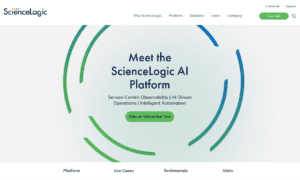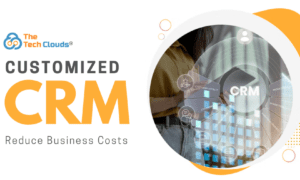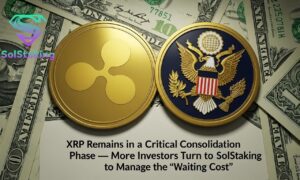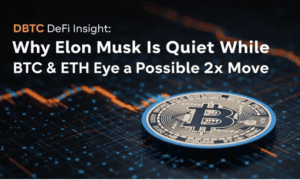Build versus buy is an age-old question in product development. While it is tempting to develop an entirely original product customized to the organization’s needs, the time, resources, and budget required trigger many opportunities to go awry or fail to get development off the ground. For several organizations, the ultimate decision comes from considering factors above and beyond time and cost. Originality, availability, and adaptability are just as important, if not more so, in determining the chosen path on the build versus buy roadmap.
Akash Kilaru is a vice president at a leading bank with more than a decade’s experience in technical project lifecycle management. Akash understands the challenges surrounding build-versus-buy decisions and offers solutions to answer the “build or buy?” question.

Akash Kilaru
Q: Which trends in product development impact a company’s determination of whether to build or buy products?
Kilaru: The last decade has seen significant and numerous advances in product development technologies and approaches. Technology is driving these changes, as are changing customer expectations and evolving business models.
Of course, the AI revolution has increased the ability to create solutions and ideas quickly. Digital design tools are decreasing costs while making designers more efficient. Cloud computing, software as a service (SaaS) models, and user-centric design also play essential roles.
Finally, product development outsourcing is a rapidly growing trend, especially in areas like the automotive industry. One recent report stated that 65 percent of tech companies choose to outsource, while another predicts a growth in the R&D outsourcing market to over $12 billion by 2028.
Q: What are the pros and cons of building a product from the ground up instead of buying an existing product?
Kilaru: The chief benefit of a company building its own product is control—control over development, customization, and integration with existing products the company has already created or is otherwise utilizing.
In addition, once the product is created, the organization owns that intellectual property. It can, in turn, sell the software to others at a profit, as Amazon famously accomplished with Amazon Web Services (AWS). Amazon developed its unique infrastructure to support its platform, but upon recognizing the potential to offer this service to other businesses, its internal expertise allowed it to scale AWS rapidly.
Lastly, data privacy may be the most significant concern for customers today. A company that recognizes its vulnerabilities and addresses them through new products is invaluable.
The same Amazon example illustrates the benefits of buying an existing product: a ready-made solution for one price. The purchasing organizations save time, have cost certainty, and the speed of getting that product to market allows them to focus on their core activities without the burden of development. Finally, buying an existing software product removes, or at least significantly reduces, the risk of overall project failure.
Q: What factors influence the decision to build or buy a new product, and which team member’s input is most critical in making an informed decision?
Kilaru: Principal factors include alignment with long-term strategies, internal resource availability and depth of expertise, and urgency of deployment combined with how quickly each available option will be able to meet business needs. Strengths, weaknesses, opportunities, and threats (SWOT) and cost-benefit analyses are beneficial frameworks for determining the organization’s path.
Key players include executive leadership, but it’s crucial to recognize the unique perspectives that cross-departmental personnel—including sales, customer support, and technical teams—can provide regarding customer demands, current market trends, and future considerations. Gathering end-user feedback via focus groups, surveys, or even one-on-one interviews is also crucial.
Q: What are real-world examples of a company’s build versus buy decision? What did they ultimately decide, and what was the outcome?
Kilaru: The Amazon example shows how building can be beneficial, but buying a solution paid off for Adobe. The company turned to acquisition when it wanted to expand its existing capabilities. For example, Adobe purchased Magento for e-commerce and Marketo for marketing automation. Those acquisitions allowed Adobe to offer a comprehensive, end-to-end suite of solutions for its customers, helped grow the company, and reinforced its standing in the marketplace.
Q: What factors will shape the future of each company’s decisions to build or buy?
Kilaru: The future will be driven by data and collaboration and will be even more customer-centric than it is today. Organizations can utilize their data, including customer preferences, trends in the marketplace, and performance metrics, when shaping and building their new products or determining the type of product they want.
Collaboration will mean working across departments with everyone from engineers to sales and customer service during the development process. That’s why it’s so important to involve everyone in deciding whether to build or buy.
Customer-centricity is a trend that will become more essential as organizations gather more information about what their customers prefer, the types of products that are the most user-friendly, and where their products need the greatest improvement.
Risk versus reward and ROI
Ultimately, organizations will weigh the flexibility, direct control, and increased peace of mind over data privacy gained from building their products against the return on investment. Purchasing a pre-built product offers greater price control while shifting the responsibility for security and scalability. Whether to build or buy a new product is a risk versus reward equation. It’s imperative for organizations to consider factors of product control, company needs, and long-term business objectives against cost concerns, urgency, and flexibility over time.



































